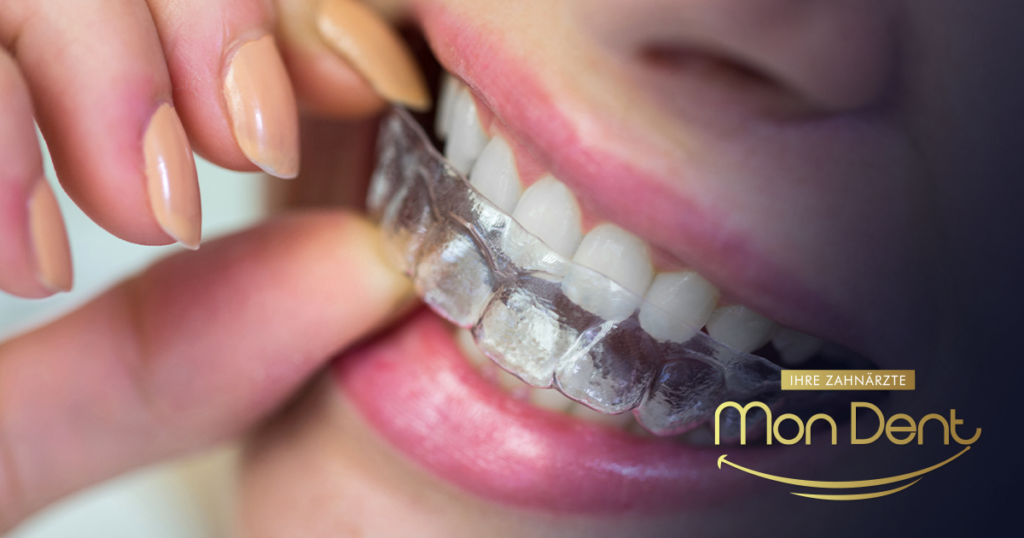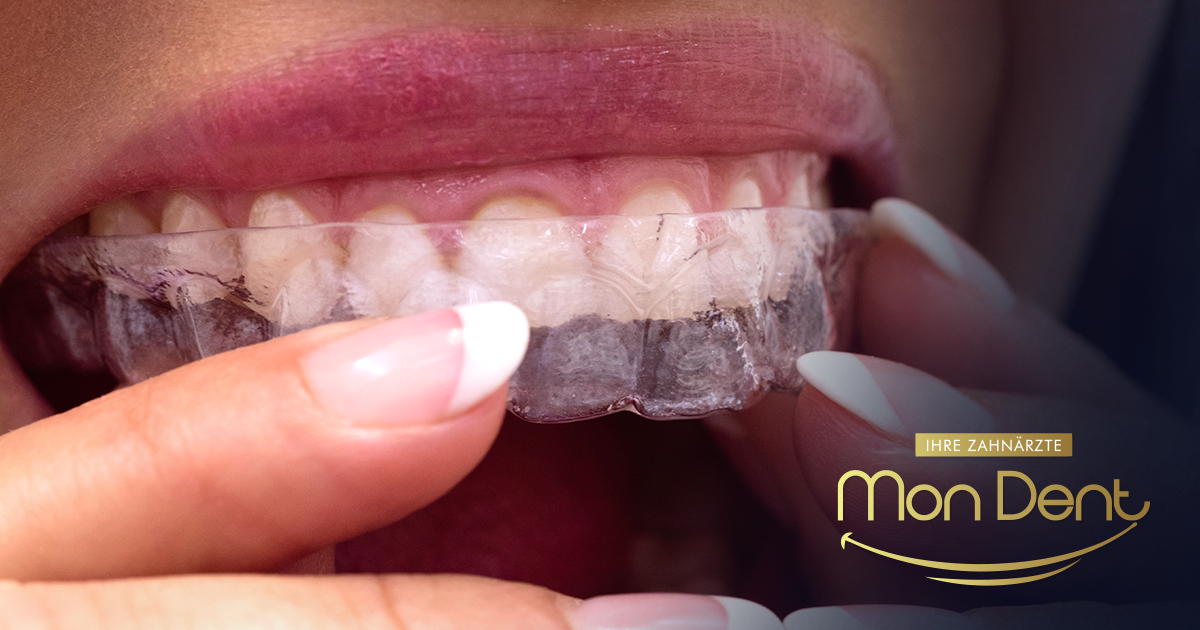Content:
- What are teeth straightening foils?
- Advantages and disadvantages of foils
- Who is a good candidate for foils?
- The therapy process – step by step
- Duration of therapy and number of foils
- Teeth straightening foils price
- Conclusion
- Frequently asked questions
Teeth straightening foils are an increasingly popular solution for those who want a straight smile without visible braces. Teeth straightening foils are transparent, easy to apply, and painless. What is important before deciding to have teeth straightening foils is to be well informed about whether you are the right candidate for this method of teeth straightening.
If you're considering this option, read this practical guide in detail that explains how foils work, who they're suitable for, how long they last, and how much they cost. You'll find clear advice in the text to help you make the ideal decision.
At the MonDent dental office, we provide all types of dental services, including treatments for successful teeth straightening. Make an appointment Visit our dentists and straighten your teeth successfully and stress-free!
What are teeth straightening foils?
Teeth straightening trays (also known as aligners) are clear, custom-made plastic trays that are worn over the teeth. Each tray moves the teeth by a small, predictable amount — a series of small movements achieve the desired tooth position. The trays are made according to a 3D scan of the teeth and a precise digital treatment plan.
How veneers move teeth (working principle)
Each foil has a gentle pressure on specific teeth. The patient wears a series of foils — usually changed every 1–2 weeks — and each new foil continues where the previous one left off. You get a digital simulation at the beginning (which helps many people see the expected result before starting treatment).
Advantages and disadvantages of foils
| Advantages | Disadvantages / limitations |
| Discretion — the foils are transparent and almost invisible, which is a big plus for adults and professionals. | They are not for all cases — severe orthodontic problems (major bite irregularities or severe skeletal anomalies) often require fixed prostheses or a surgical approach. |
| Comfort — the smooth material usually doesn't irritate the cheek or gums like metal braces. | Discipline — foils only produce results if you wear them for the recommended 20+ hours per day. |
| Removable — you can remove the foils when eating and brushing your teeth, making maintaining hygiene easier. | |
| Digital planning — you often get a visualization of the end result before you start. |
Who is a good candidate for foils?
Ideal candidates
- Adults and teenagers who are responsible and ready for the discipline of wearing foils (20–22 hours a day).
- People with minor to moderate irregularities — rotations, slight crowding, small gaps (diastemas), slight bite corrections.
- Patients who want discreet therapy — professionals, public figures, or anyone who wants a less visible orthodontic appliance.
- Patients with good oral health — before starting treatment, it is necessary to resolve caries, periodontal disease, or other dental problems.
When foils may not be the best choice
- Severe skeletal abnormalities
This is a problem with the position of the jaw (skeletal disproportion). In this case, a combination of fixed appliances and orthognathic surgery is often needed.
- Large rotations and rotations of teeth with short roots
Foils may have limited effect in large rotations, especially in teeth with specific anatomical features.
- Patients who cannot be disciplined
If you often eat without replacing the foil, smoke, or do not maintain hygiene, the foils will not give good results. You must be consistent and always wear the foils.
- Specific dental work
Large bridges or improperly placed crowns sometimes limit the effectiveness of veneers.
Additional elements that help foil therapy
- Attachments — small composite “bumps” that are glued to the teeth to give the veneers a better “grip” and transmit forces more efficiently; they are often necessary for more complicated adjustments.
- Interproximal reduction (IPR) — gentle grinding between teeth to create space for alignment, often used instead of tooth extraction.
- Collaboration with an experienced orthodontist — a good plan, the right attachments, and follow-up significantly increase the chances that foils will produce the expected result.
The therapy process – step by step
1. Initial examination and diagnostics
The dentist performs an examination, X-rays/orthopaedics if necessary, and 3D scans or classic impressions. Based on this, a digital plan for tooth movement and an estimate of the number of veneers are created.
2. Therapy plan and simulation
You will see a computer simulation of how the teeth will move through all phases. This helps you clearly understand the expected outcome and duration of the therapy.
3. Wearing and changing foils
Typically, the trays are worn for 20+ hours a day and replaced every 1–2 weeks as directed by your dentist. Regular check-ups allow you to monitor your progress.
4. Retention (after therapy)
As with fixed appliances, after the end of therapy, a retention foil or a removable retainer is often prescribed to hold the teeth in their new position.

Duration of therapy and number of foils
How long does therapy usually last?
The duration of foil therapy varies greatly and depends on the severity of the orthodontic problem and the goals of the treatment. When it comes to mild cases (small corrections, e.g. closing a small diastema or slight rotation), you can solve your problem in a period of 3 to 6 months.
Medium or moderate cases require a little more time for the teeth to align. You will resolve all irregularities in 6 to 12 months. More complex cases (combined corrections, required finesse) may take longer. 12–24 months or longer, and sometimes foils are used in combination with fixed elements.
How many foils are typically needed?
Milder cases may only require 10–20 foil, while more complex cases may require 30–60 foils or moreEach foil usually moves the teeth by a small step, so a larger number of steps means a longer treatment.
Many plans include primary series foil and refinements — additional foil series after the primary phase is complete to fine-tune the results. Refinement series can add several weeks or months and several additional foils, which also affects the teeth straightening foils price.
Factors affecting the duration and number of foils
- Condition of teeth and bite — the complexity of the case is a major factor.
- Patient's age — in younger patients, changes sometimes occur more quickly, but foils are most often the choice of adults.
- Respecting the wearing regime — Consistently wearing the foils for 20–22 hours a day dramatically accelerates progress; non-adherence prolongs therapy.
- Additional work required — grinding of interdental spaces, making attachments, preparations or additional orthodontic work may extend the time.
- Planning quality — good digital simulation and the experience of the orthodontist often reduce the number of necessary corrections and refinements.
Teeth straightening foils price
How is the price calculated?
The price can be calculated in different ways: per individual foil, or as the total price of the complete therapy (foil package, consultations, examinations, possible additional work). Therefore, it is important to seek a clear financial plan before starting therapy.
Price examples (indicative, BiH / Banja Luka and region):
- Many clinics quote a price per foil in the range of approximately 200–250 KM per foil in Bosnia and Herzegovina (depending on the practice).
- Some offers or dental tourism packages advertise complete treatments for lower or promotional prices (e.g. promo prices of ~100 EUR in some offices) — but this depends on the scope of the treatment and the number of foils. Always ask for a detailed plan and what is included in the price.
Conclusion
Teeth straightening foils are a modern, aesthetically pleasing and comfortable solution for anyone who wants straight teeth without visible metal braces. They allow for discreet correction of minor and medium irregularities, easier maintenance of oral hygiene and precise digital therapy planning.
Before making a decision, it is important to do your research, make sure you are a good candidate, and consult with an experienced orthodontist. Proper discipline in wearing your braces and following your scheduled check-ups are key to achieving the smile you want.
If you want to find out if teeth straightening foils are the right solution for you and start your journey to a perfect smile, schedule an appointment with our experts at MonDent dental office already today
Frequently Asked Questions (FAQ)
How painful are foils?
When changing the foil, you will usually feel a slight pressure for a few days — this is normal and a sign that the foil is working.
Can I eat with foil?
It is recommended to remove the foil before eating. Food and liquids (except water) can damage the foil or change its color.
What if I lose the foil?
Contact your dentist as soon as possible; you will often continue with a backup foil or follow your dentist's instructions.
How often should I come for a check-up?
A regular check-up is usually arranged every 6–12 weeks, but this depends on the treatment plan.





